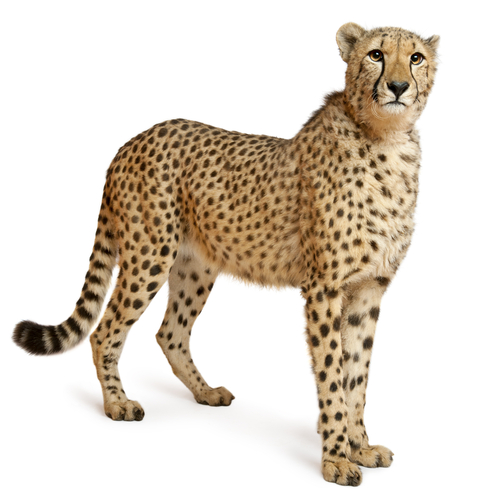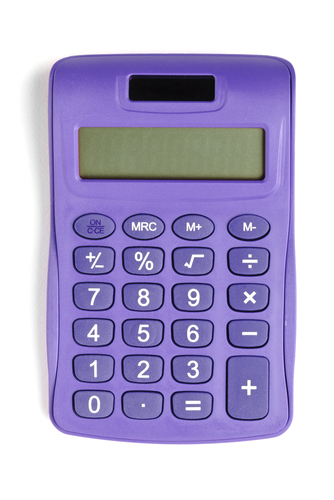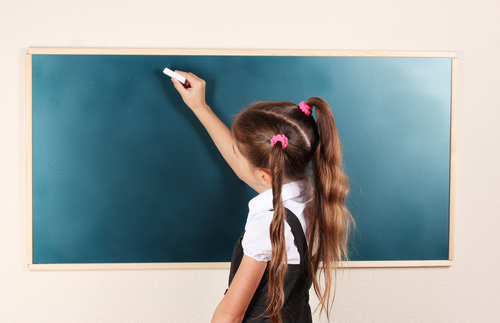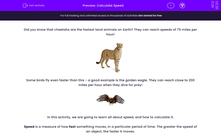Did you know that cheetahs are the fastest land animals on Earth? They can reach speeds of 75 miles per hour!

Some birds fly even faster than this - a good example is the golden eagle. They can reach close to 200 miles per hour when they dive for prey!
.jpg)
In this activity, we are going to learn all about speed, and how to calculate it.
Speed is a measure of how fast something moves, in a particular period of time. The greater the speed of an object, the faster it moves.
In the examples above, the speed was measured in miles per hour. This is a common unit for speed. But, in science, the standard unit for speed is metres per second (m/s), so for the rest of the activity we will only use those units.
The cheetah has a top speed of 29 m/s. But what does that mean?

It means that a cheetah can travel a distance of 29 metres in one second!
How can we calculate speed? We can use this equation below:

For this equation, the standard units are:
Speed measured in metres per second (m/s)
Distance measured in metres (m)
Time measured in seconds (s)

Let's practise using this equation. Go ahead and have a calculator ready!
Example
A student runs at a constant speed to catch a bus.
They travel a distance of 30 metres in 12 seconds.
What is their speed?
Give the answer in metres per second (m/s)

Let's start this question by looking at the equation again.
Speed = Distance ÷ Time
We can substitute the numbers into the equation.
Speed = 30 m ÷ 12 s
So, that means that the speed = 2.5 m/s
Notice, that we added the unit for our answer, m/s. Units are really important - if we don't add the unit then the answer isn't complete!

Sometimes, we might have to answer a question where the units need to be converted.
There might be a question with a distance measured in kilometres. Do you know how to convert kilometres to metres?
One kilometre is the same as 1,000 metres.
To convert kilometres into metres, multiply the number by 1,000
For example, a distance of 9.5 kilometres is the same as 9.5 × 1,000 = 9,500 metres.
Let's try one last example.
Example
A speed boat travels 3.5 kilometres, and it takes 140 seconds to travel this distance.
What is the speed of the boat?
Give your answer in metres per second (m/s).

Step 1 - Let's convert the distance: 3.5 km × 1,000 = 3,500 metres.
Step 2 - Now we use the equation: Speed = Distance ÷ Time
Speed = 3,500 ÷ 140 = 25 m/s
Now that we have practised these skills, let's try some questions!








